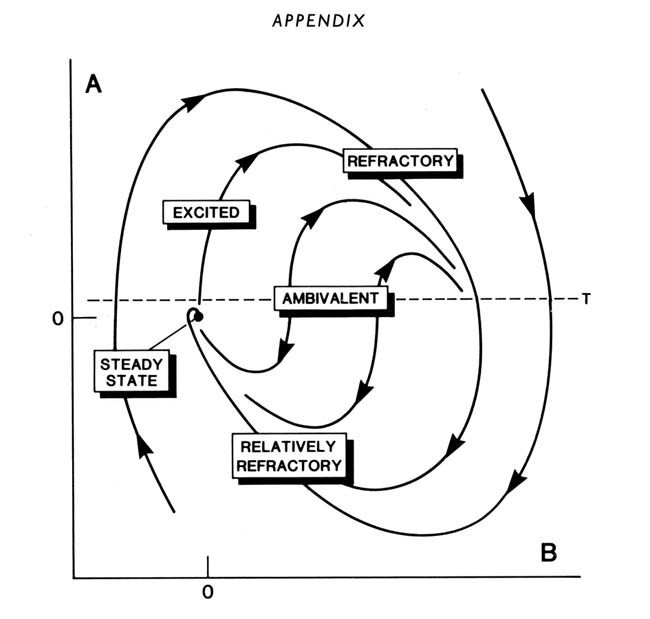"Creation did occur, but as a process of natural self-organization."
photographer unknown: multiple photograph of Chico Marx c.1909
Self-organizing systems acquire new structure without specific interference from the outside. They exhibit qualitative macroscopic changes such as bifurcations or phase transitions. Stuart Kaufman calls this " Order for Free."Self-organization is the capacity of a field to generate patterns spontaneously, without any specific instructions. What exists in the field is a set of relationships among the components of the system such that the dynamically stable state into which it goes naturally -- what mathematicians call the generic (typical) state of the system, has spatial and temporal patterns. Fields of this type are now called excitable media. (see for example Belousov-Zhabotinsky reaction.)
"Self-organizing systems...accomplish their remarkable feats by incorporating chance into the substances of their forms, which then persist, maintained by their own functions" (Yates, p.10) ...deterministic in principle, not exactly knowable in practice. Self organizing systems may have an absolute requirement for random fluctuations at some point in their histories. (see clinamen for a classical account of fluctuation.)
Most descriptions of self-organization stress cooperative behaviour between elements. For example, the difference between ordinary light and lasers can be described as follows: "In the ordinary lamp, electrons of individual atoms make their optical transitions independently of each other, but in the laser the electrons make their optical transitions cooperatively".
Gestalt psychology described perception and brain-events as self-organizing systems that spontaneously take on the "best" or simplest arrangement in given conditions. In 1914, Max Wertheimer introduced the principle of Prägnanz to describe this capacity. The geometrical hallucinations of migraines are also an example of the complex, reiterative patterns in time and space which represent the ways such dynamic, non-linear systems organize themselves.
"For a long time turbulence was identified with disorder and noise. Today we know this is not the case. Indeed, while turbulent motion appears as irregular or chaotic on the macroscopic scale, it is, on the contrary, highly organized on the microscopic scale...Viewed in this way, the transition from laminar flow to turbulence is a process of self-organization" (Prigogine, Order Out of Chaos, p.141)
One example of a self-organizing system is a river system. While all water runs downhill, rivers both carve channels and carry a bed load (which silts up the channels) This results in meandering. On a geological time scale this adaptation by changing form can be described as a life-like behaviour. While the thermodynamic processes of the hydrological cycle (rainfall = evaporation plus runoff) and of the landmass are near equilibrium in local regions, they display a fairly ergodic character. A single river system can be described as being born, living, and dying.
For Per Bak, Kurt Wiesenfeld, and Chao Tang, large interactive dynamical systems typically self-organize into a globally correlated "critical" state, far out of equilibrium. see self-org. criticality.
